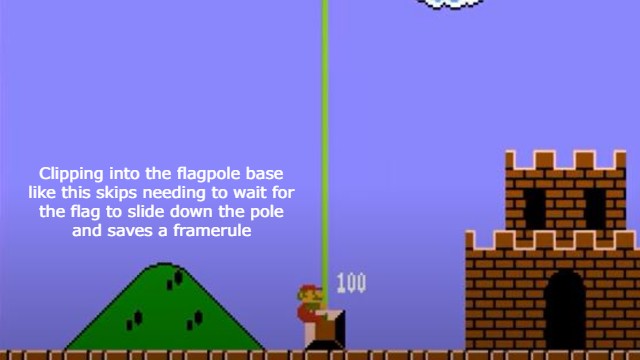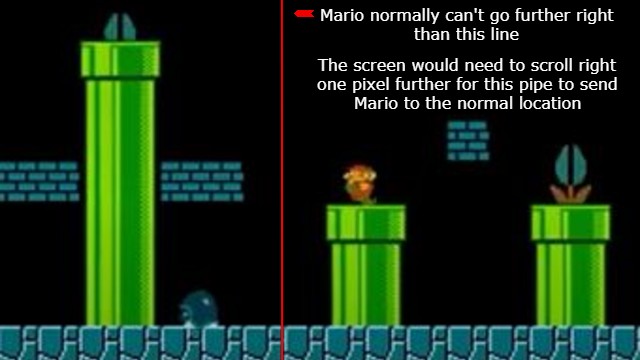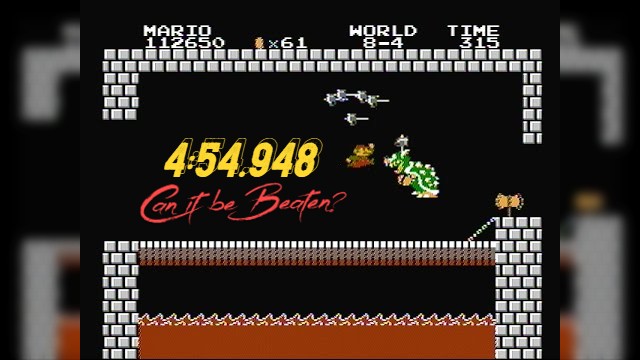On April 7, 2021, speedrunner Niftski set a new world record in the Any% category of Super Mario Bros with a time of 4:54.948. This was the first-ever sub-4:55 run of the classic Nintendo platformer and will go down as the last–ever second barrier. A sub-4:54 run is impossible, but is it possible to get a lower 4:54 and break Niftski’s record?
Super Mario Bros, released in 1985, has had ample time to be mastered by speedrunners. As it stands now, the Any% category is one of the most optimized runs in all of gaming. This, plus the popularity of the franchise and the cultural impact of this specific title, make speedrun world records in this game some of the most coveted. 4:54, being the last-second barrier possible to break in the game, makes this world record one of the biggest milestones in speedrunning history.
To better follow along with this discussion, take a look at Niftski’s world record:
How Was the Record Set?
To really drive home just how optimized this run is, it’s iportant to know exactly how the game functions. Super Mario Bros can only load the next level on every 21st frame, an interval of time that players have dubbed “framerules,” which are 21 frames or 0.35 seconds. If a runner reaches the end of a level 11 frames into a framerule, 20 frames into a framerule, or just one frame into a framerule, the next level will only load at the beginning of the next framerule.
This means that once a level has been optimized to the point of being beaten in the earliest possible framerule, then it is already at its theoretical limit.
The Any% route is as follows: play through 1-1, take the warp zone in 1-2 to 4-1, complete 4-1, and take the warp zone in 4-2 to 8-1. Then play through the final four levels and defeat Bowser at the end of 8-4.
Runners play through eight levels total. Of these eight, Niftski got the theoretically best possible time on six of them. Not even AI programmed to beat the game as quickly as possible could beat Niftski on those six levels.
Of course, this means there is still time to save on two levels. We’ll get to those, but first, let’s consider some of the highlights of the current world record that put this run into perspective. Some of this may sound like jargon at first, but what’s important is that it’s noted how precise all these tricks are.
- On worlds 1-1, 4-1, 8-1, and 8-3, Niftski performed what is known as the flagpole glitch. These glitches allow players to skip the flagpole animation and enter the castle early, and all require frame-perfect inputs and subpixel-perfect positioning.

- 1-2 and 4-2 both include frame-perfect wall clips. The first is used to access the warp zone quicker, while the latter is used to push Mario further to the right side of the screen, a requirement for the first “wrong warp” glitch.
- 8-1 features what is known as a fast acceleration on the first frame of the level. Niftski had to hit left on the first frame of the level, then jump and hit right on the third frame, and release jump on the fourth frame. These are all frame-perfect inputs that allow Mario to reach running speed quicker and must be started on the first frame possible, with no cue as to when that first level frame is coming. Doing this, plus the flagpole glitch at the end, allows him to catch the earliest possible framerule with zero frames to spare.
- 8-2 includes the infamous “Bullet Bill Glitch” to trick the level into ending two framerules early; another frame-perfect trick, as well as the “TAS 8-2” setup, which involves getting to the end of the level at such a pace that was only recently determined to be humanly possible thanks to new setups.
- Timing ends on the frame that Bowser’s axe is grabbed, not the framerule that it is grabbed, so every frame counts on 8-4. Niftski made use of a frame-perfect wall jump and an incredibly difficult fast acceleration before the second wrong warp to get a low enough time for 4:54.
That only covers the key moments of the run. Every level features at least one frame-perfect, pixel-perfect trick, and Niftski hit each one in succession, on top of perfect general movement through everything between.
So what are the two levels that runners could theoretically save time on, and are they humanly possible to save time on?
Where Can Time Be Saved?
The more realistic area to save time on is 8-4. There are 20 possible frames to save on this level, though the fastest 8-4 ever done in practice only saved 17 of those frames, also done by Niftski.
These 20 frames can be saved by performing first-frame fast accelerations in every room of 8-4, similar to what is done at the beginning of 8-1. Considering the incredibly low success rate of the 8-1 trick by even the most accomplished speedrunners, it is unlikely that we’ll see anyone hit it multiple times in one level at the tail-end of a world record pace run, anytime soon at least.
A fast acceleration means that Mario is programmed to decelerate from running speed to zero faster than he accelerates from zero to running speed. The software determines deceleration when you are trying to move in the direction opposite the way you are facing. Thus, by facing left and doing a backward jump to the right, you will “decelerate” to maximum speed quicker.
The other level to save time on is 4-2, where a single framerule can be saved. This is done by hitting a trick known as “Lightning 4-2.” The trick to this level is to push Mario 20 pixels further to the right of the screen than is normally possible.
By doing so, Mario can enter a pipe before the screen has scrolled far enough to the right to overwrite the pipe’s transition data. Instead of taking you to a coin cache like normal, it takes you to the above-ground region that you typically need to watch a vine-climbing cutscene to reach.
Niftski uses the wall clip to nudge Mario to the right enough, but there is a quicker way of doing it. By bumping into corners of blocks in the right way, while facing backward but holding right, runners can force Mario to the right 7-10 pixels per bump. Two perfect bumps would thus get you the exact amount of pixels needed, and going down the first pixel of the pipe would take you above ground. This saves a few frames over Niftski’s record.

Once above ground, runners would then have to hit a first-frame fast acceleration, just like 8-1 again, then enter the 8-1 warp zone pipe on the first possible frame to save an additional framerule overall on 4-2. When Niftski practiced this trick, it took him six months of on-and-off attempts to hit it once.
In conclusion, there are 41 possible frames left to save in Super Mario Bros, so yes, the record can and will be beaten. Most likely, the next few records will involve small timesaves on 8-4 as single fast accelerations are added, but a framerule save on 4-2 is inevitable. It’s just a matter of time and practice.
Taking down those 41 frames would result in a 4:54.265, the fastest possible time the game can be beaten. As we come closer to perfection, the improvements only get harder, and right now, those improvements are nearly impossible. To see Niftski’s run compared with the theoretically perfect 4:54.265, and see those potential 4-2 and 8-4 timesaves for yourself, check out this comparison video:







Published: May 19, 2021 01:52 am